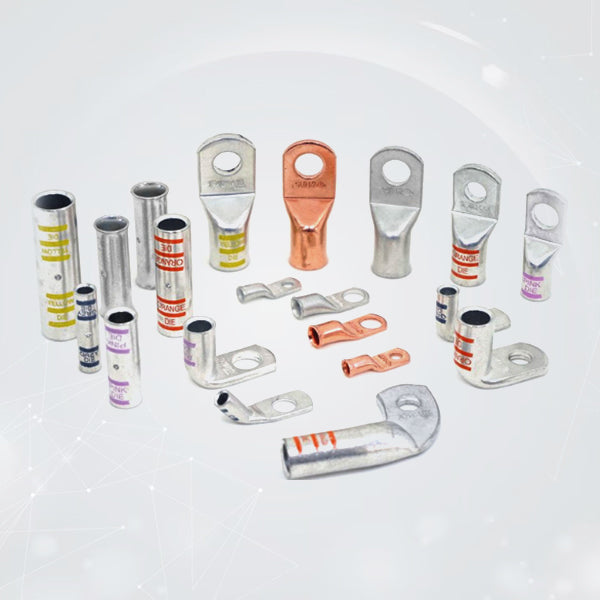
Understanding the Importance of Tinned Copper Lugs in Electrical Connections
In the realm of electrical systems, the reliability and longevity of connections are paramount. A faulty connection can lead to a cascade of problems, ranging from reduced efficiency and equipment malfunction to overheating and potentially dangerous electrical fires. Among the various types of connectors available, tinned copper lugs stand out as a superior choice for many applications, offering a unique combination of conductivity and corrosion resistance. This article delves into the importance of tinned copper lugs in electrical connections, exploring their benefits, applications, and best practices for ensuring their optimal performance.
The Role of Lugs in Electrical Connections
Before delving into the specifics of tinned copper lugs, it's essential to understand the fundamental role of lugs in electrical systems. Lugs are connectors that are used to terminate wires or cables, providing a secure and reliable point of attachment to electrical equipment. They are typically made from conductive materials, such as copper or aluminum, and are designed to be crimped or soldered to the wire. The primary function of a lug is to create a low-resistance electrical connection that can efficiently carry current. In many applications, lugs are subjected to harsh environmental conditions, including moisture, chemicals, and temperature extremes. Therefore, the choice of lug material and finish is crucial for ensuring the long-term reliability of the connection.
The Benefits of Tinned Copper
Copper is an excellent conductor of electricity, making it the preferred material for many electrical connectors. However, copper is also susceptible to corrosion, particularly in the presence of moisture and certain chemicals. Corrosion increases resistance, reduces conductivity, and can eventually lead to connection failure. This is where tin plating comes into play. Tin is a corrosion-resistant metal that, when plated onto a copper lug, provides a protective barrier against oxidation and other forms of degradation. Tinned copper wire lugs offer the best of both worlds: the superior conductivity of copper combined with the corrosion resistance of tin. This makes them an ideal choice for applications where reliability and longevity are paramount.
Advantages of Using Tinned Copper Lugs
- Enhanced Corrosion Resistance: The most significant advantage of tinned copper lugs is their enhanced resistance to corrosion. The tin plating acts as a sacrificial anode, protecting the copper from oxidation and other forms of degradation. This is particularly important in marine, automotive, and industrial applications where connections are often exposed to harsh environments.
- Improved Conductivity: While copper is an excellent conductor, corrosion can significantly increase resistance and reduce conductivity. By preventing corrosion, tinned copper wire lugs maintain a low-resistance connection, ensuring efficient power transfer and minimizing energy loss.
- Increased Longevity: The combination of copper's conductivity and tin's corrosion resistance results in a connector with exceptional longevity. Tinned copper lugs are designed to withstand the test of time, reducing the need for frequent maintenance and replacements.
- Reduced Maintenance: The corrosion resistance of tinned copper lugs translates to reduced maintenance requirements. This is particularly important in applications where connections are difficult to access or where downtime is costly.
- Versatility: Tinned copper lugs are available in a wide range of sizes and designs, making them suitable for a broad spectrum of applications. Whether it's for small gauge wires in electronic circuits or large gauge cables in power distribution systems, there's a tinned copper cable lug designed to meet the specific requirements of the job.
Applications of Tinned Copper Lugs
The unique properties of tinned copper lugs make them a preferred choice in various industries and applications, including:
- Marine: The harsh marine environment, with its exposure to saltwater and moisture, demands connectors that can withstand corrosion. Tinned copper lugs are widely used in boat wiring and marine electrical systems.
- Automotive: Automotive electrical systems are subjected to vibration, temperature extremes, and exposure to various chemicals. Tinned copper lugs provide reliable connections that can withstand these demanding conditions.
- Telecommunications: Telecommunications equipment requires reliable and long-lasting connections to ensure uninterrupted service. Tinned copper lugs are used in various telecommunications applications.
- Renewable Energy: Solar and wind power systems often operate in harsh environments. Tinned copper lugs are used to ensure the reliable transfer of energy in these systems.
- Industrial: Industrial equipment often operates under heavy loads and in demanding conditions. tinned battery lugs provide the robust and reliable connections required for these applications.
Best Practices for Using Tinned Copper Lugs
To maximize the performance and longevity of tinned copper lugs, it's essential to follow best practices for installation and maintenance:
- Proper Lug Selection: Choose the correct size and type of tinned copper lug for the wire and the application. Ensure that the lug is rated for the current and voltage requirements of the circuit.
- Cable Preparation: Prepare the cable correctly by stripping the insulation to the appropriate length and ensuring that the wire strands are clean and undamaged.
- Crimping Technique: Use a crimping tool that is designed for the specific size and type of lug. Apply firm, even pressure to create a secure and gas-tight crimp.
- Connection Inspection: After crimping, thoroughly inspect the connection to ensure that it is properly made. Check for any loose strands, sharp edges, or signs of damage.
- Environmental Protection: In particularly harsh environments, consider using additional protection, such as heat shrink tubing, to seal the connection and provide further protection against moisture and corrosion.
- Regular Maintenance: Periodically inspect the connections for any signs of corrosion, loosening, or damage. Clean and tighten the connections as needed.
Technical Details Recap
- Material: Copper with tin plating
- Key Benefit: Enhanced corrosion resistance
- Applications: Marine, automotive, telecommunications, renewable energy, industrial
Conclusion
Tinned copper cable lugs play a crucial role in ensuring the reliability and longevity of electrical connections. Their unique combination of copper's conductivity and tin's corrosion resistance makes them a superior choice for a wide range of applications. By understanding their benefits and adhering to best practices for installation and maintenance, you can ensure that your electrical systems operate safely and efficiently for years to come.

